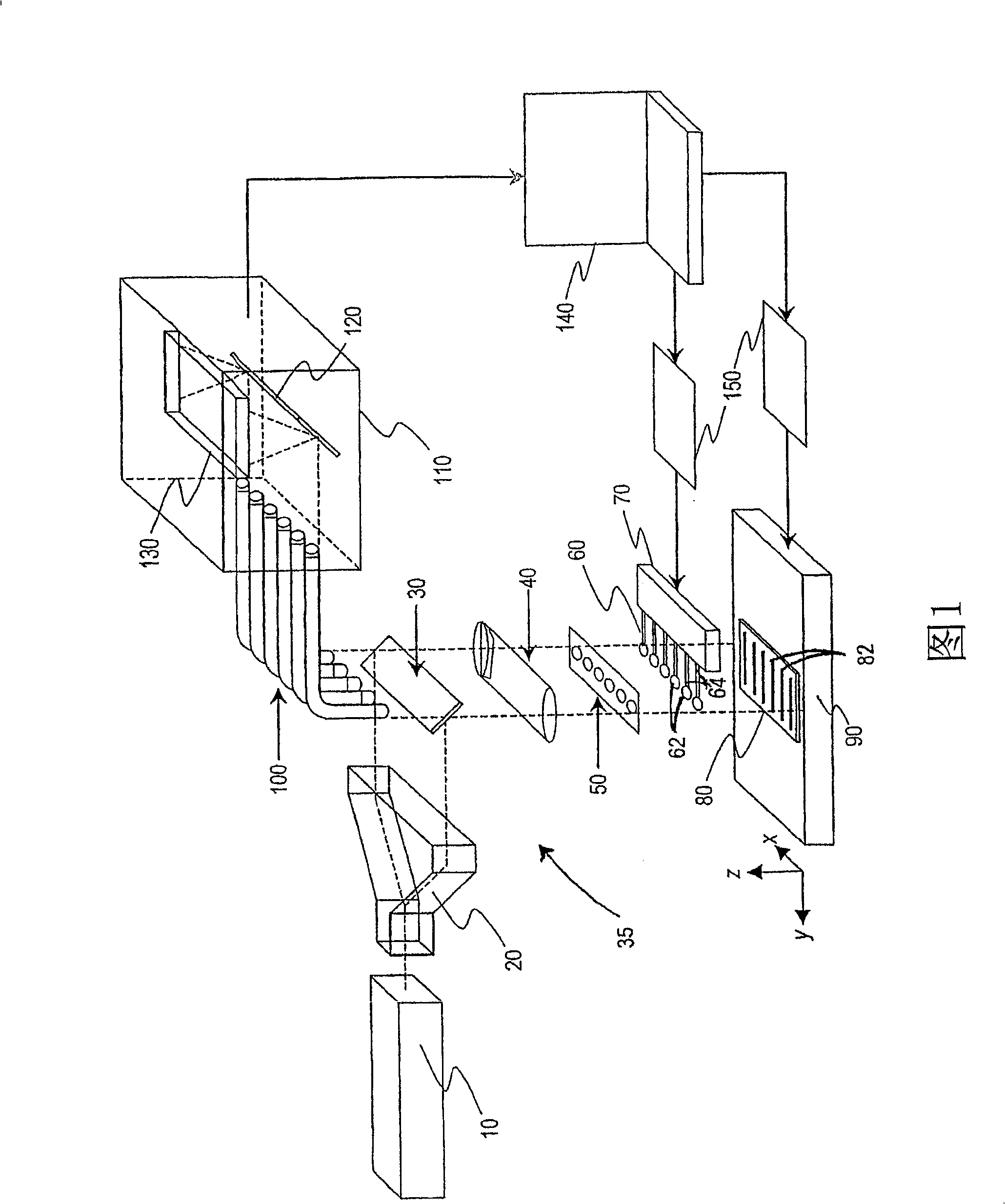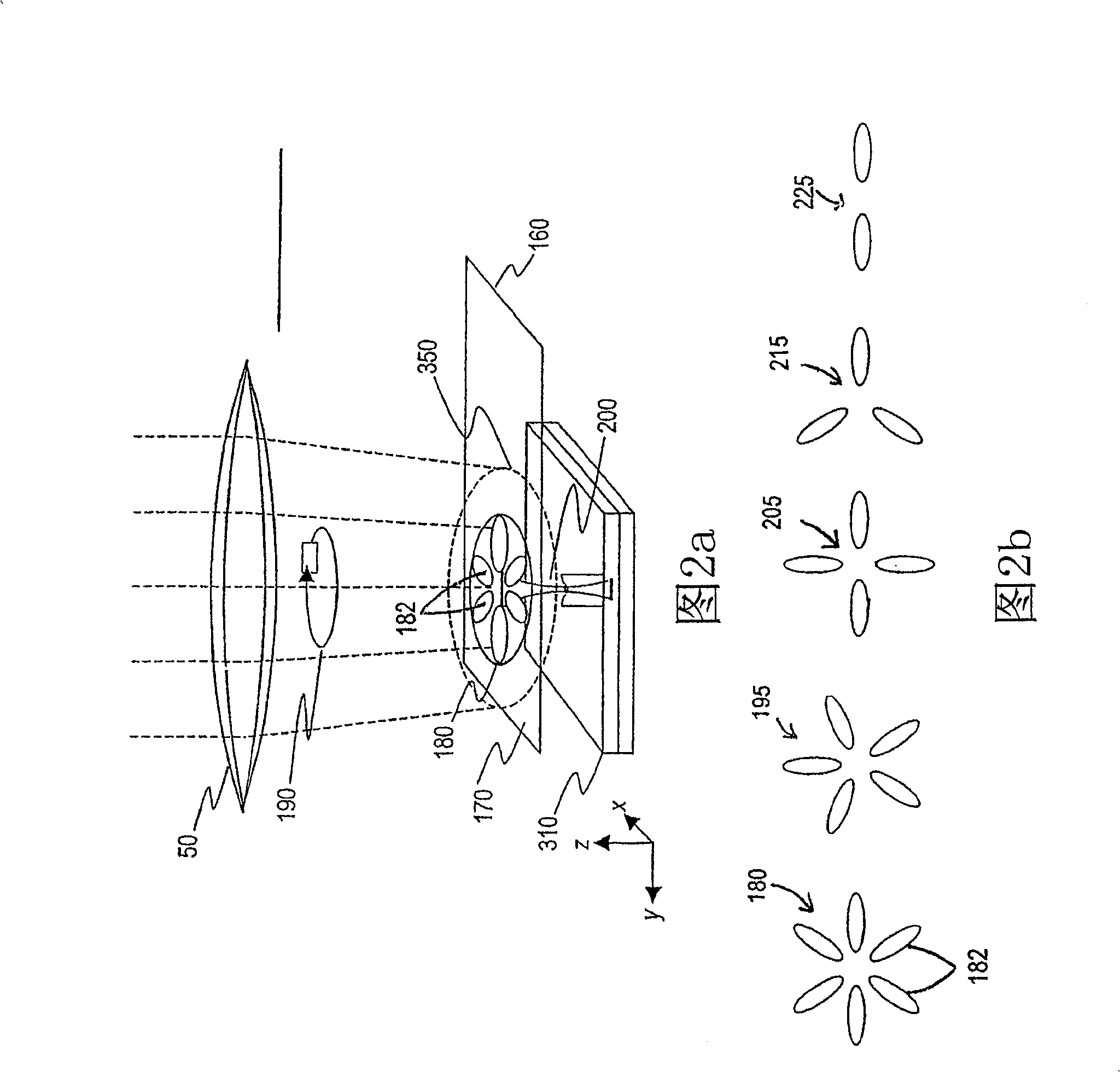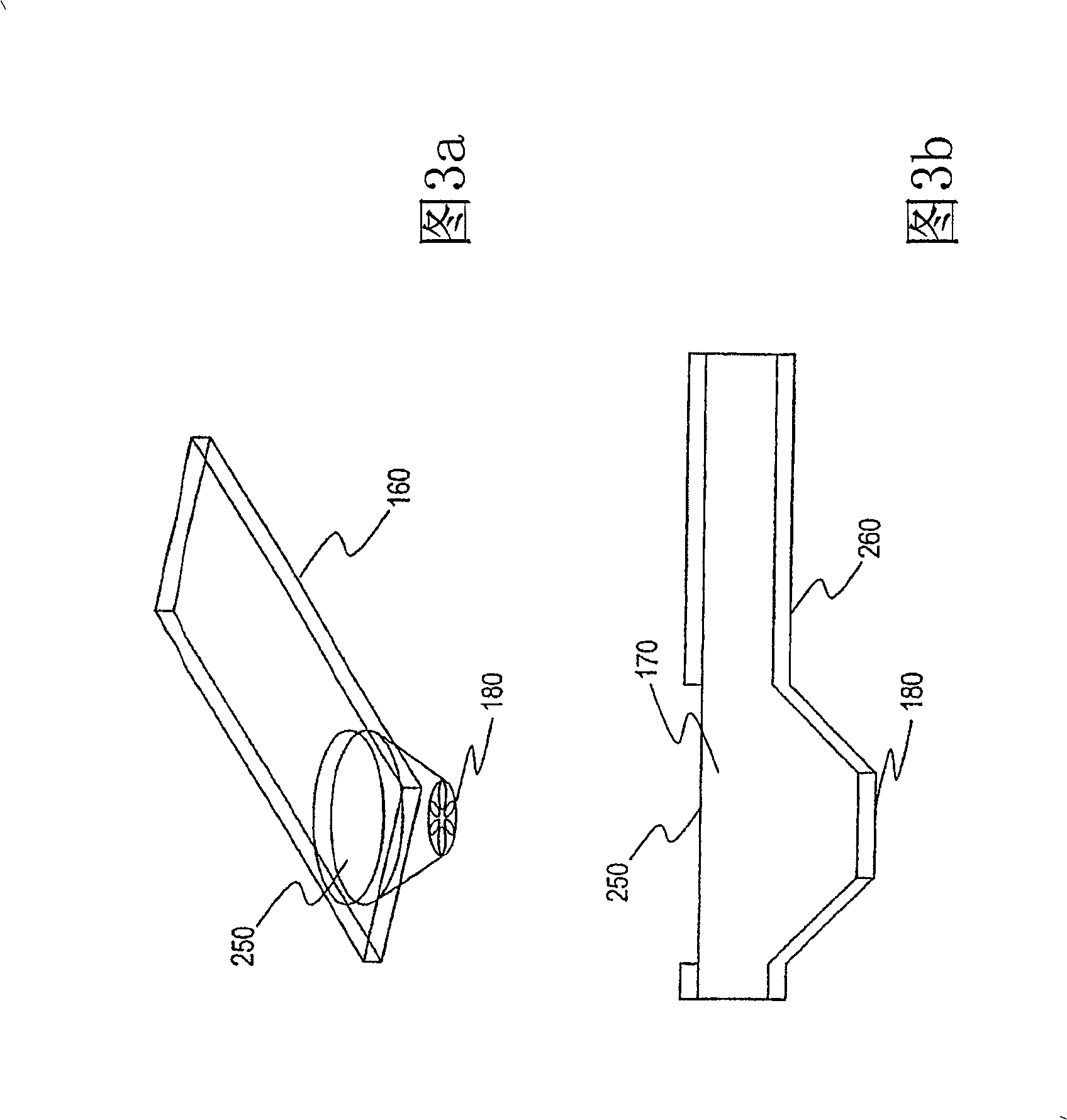Method and apparatus for enhanced nano-spectroscopic scanning
A nano-lens technology, applied in the field of nano-spectroscopy, which can solve the problem of not revealing or proposing, not proposing parallel readout of multiple samples, etc.
- Summary
- Abstract
- Description
- Claims
- Application Information
AI Technical Summary
Problems solved by technology
Method used
Image
Examples
Embodiment Construction
[0037] I. Definition
[0038] The following terms have the following meanings, unless otherwise stated, "plasmon resonance metal" includes any metal, such as gold, silver or aluminum, which can support surface electromagnetic modes - surface plasmon polarization (SPP), i.e. photons and plasmons Coupling modes of bulk oscillators.
[0039] A "chemical group" in a sample may include a subunit or part of a subunit in a polymer, such as a nucleic acid group, or a chemically substituted molecular group, such as a hydroxyl, amine, alkyl, acid or aldehyde group. These chemical groups are characterized by characteristic enhanced Raman spectral signatures or characteristics.
[0040] "Gap mode" refers to electromagnetic conventional modes or electromagnetic eigenmodes that are placed near a metal surface by an external electromagnetic field located in the gap between two or more plasmon resonant particles (less than 40nm), especially when the plasmon resonance is excited on the meta...
PUM
| Property | Measurement | Unit |
|---|---|---|
| size | aaaaa | aaaaa |
| diameter | aaaaa | aaaaa |
Abstract
Description
Claims
Application Information
 Login to View More
Login to View More - R&D
- Intellectual Property
- Life Sciences
- Materials
- Tech Scout
- Unparalleled Data Quality
- Higher Quality Content
- 60% Fewer Hallucinations
Browse by: Latest US Patents, China's latest patents, Technical Efficacy Thesaurus, Application Domain, Technology Topic, Popular Technical Reports.
© 2025 PatSnap. All rights reserved.Legal|Privacy policy|Modern Slavery Act Transparency Statement|Sitemap|About US| Contact US: help@patsnap.com



